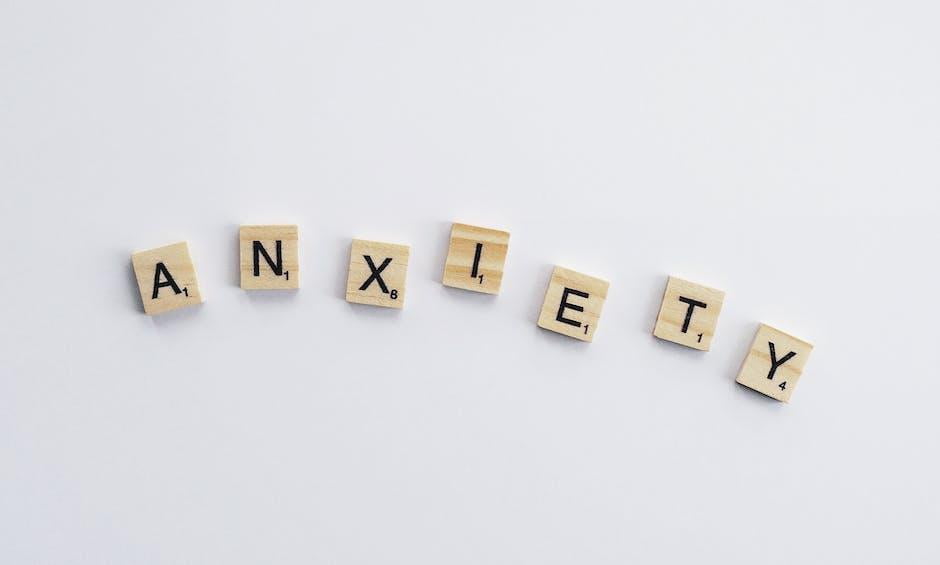Physical and mental health are two sides of the same coin, each influencing and being influenced by the other. This blog post delves into the intricate relationship between physical and mental health, the benefits of physical activity, and strategies for maintaining overall health. Stick around to learn how you can optimize your health and well-being.
Key Takeaways
- Understanding the interconnectedness of physical and mental health.
- The benefits of physical activity on overall health.
- The role of physical activity as a preventative measure.
- The importance of understanding mental health.
- The impact of mental illnesses on physical health.
- Strategies for maintaining physical and mental health.
- The role of society in promoting health.
The Interconnectedness of Physical and Mental Health
Definition of Overall Health Incorporating Both Physical and Mental Aspects
Health is not merely the absence of disease or infirmity but a state of complete physical, mental, and social well-being. This holistic view of health recognizes the interconnectedness of physical and mental health, where each can influence the other.
The Impact of Physical Health on Mental Well-being
Physical health can significantly impact mental well-being. For instance, chronic physical illnesses can lead to depression and anxiety. On the other hand, regular physical activity can enhance mood and reduce stress levels.
The Influence of Mental Health on Physical State
Mental health also plays a crucial role in one’s physical state. Stress, depression, and anxiety can manifest physically, leading to headaches, stomach issues, and even chronic diseases. Thus, maintaining mental health is vital for overall well-being.

Benefits of Physical Activity on Health
Immediate Psychological Benefits
Mood Enhancement
Physical activity releases endorphins, the body’s natural mood enhancers. Regular exercise can help improve mood and increase feelings of happiness.
Stress Reduction
Exercise is a natural stress reliever. It helps reduce levels of the body’s stress hormones, such as adrenaline and cortisol, and stimulates the production of endorphins.
Alleviation of Anxiety and Depression
Physical activity can help alleviate symptoms of anxiety and depression by promoting relaxation and improving mood. It can also serve as a distraction, allowing individuals to break away from negative thoughts.
Cognitive Function Improvement
Regular physical activity can enhance cognitive functions, including memory and attention. It can also help delay cognitive decline in older adults.
Long-term Physical Health Benefits
Chronic Disease Risk Reduction
Regular physical activity can help reduce the risk of developing chronic diseases such as heart disease, diabetes, and certain types of cancer.
Bone and Muscle Strengthening
Exercise plays a crucial role in building and maintaining healthy bones and muscles. It can also improve balance and coordination, reducing the risk of falls in older adults.
Increased Longevity
Regular physical activity can contribute to increased longevity by reducing the risk of chronic diseases and improving overall health.

Physical Activity as a Preventative Measure
Role in Preventing Chronic Diseases
Cardiovascular Disease
Regular physical activity can help prevent cardiovascular disease by improving heart health and reducing risk factors such as high blood pressure and cholesterol levels.
Type 2 Diabetes
Exercise can help prevent type 2 diabetes by improving insulin sensitivity and helping maintain a healthy weight.
Metabolic Syndrome
Physical activity can help prevent metabolic syndrome, a cluster of conditions that increase the risk of heart disease, stroke, and type 2 diabetes.
Certain Cancers
Regular exercise can help lower the risk of developing certain types of cancer, including breast and colon cancer.
Reduction in the Risk of Infectious Diseases
Regular physical activity can strengthen the immune system, reducing the risk of infectious diseases.
Importance in Aging Populations
Fall Risk Reduction
Exercise can improve balance and coordination in older adults, reducing the risk of falls.
Maintenance of Daily Living Activities
Regular physical activity can help older adults maintain their ability to perform daily living activities independently.

Understanding Mental Health
Definition and Importance of Mental Health
Mental health refers to our cognitive, emotional, and social well-being. It affects how we think, feel, and act, making it an essential aspect of overall health.
Factors Influencing Mental Health
Genetic Components
Genetics can play a role in mental health, with certain mental health conditions being more common in individuals with a family history of these disorders.
Biological Factors
Biological factors, such as brain chemistry and hormone levels, can also influence mental health.
Environmental Influences
Environmental factors, such as exposure to violence or severe stress, can impact mental health.
Psychological Triggers
Psychological triggers, such as traumatic events or significant life changes, can also affect mental health.
The Dynamic Nature of Mental Health Over Time
Mental health can change over time, influenced by a variety of factors including age, life experiences, and changes in physical health.

Mental Illnesses and Their Impact
Prevalence of Mental Illnesses Globally
Mental illnesses are common, with nearly one in five adults in the U.S. experiencing mental illness each year. Globally, hundreds of millions of people are affected by mental health conditions.
Common Types of Mental Health Conditions
Common mental health conditions include depression, anxiety disorders, bipolar disorder, and schizophrenia. Each of these conditions can significantly impact an individual’s daily life and overall health.
The Relationship Between Mental Illness and Physical Health
Mental illnesses can impact physical health, leading to an increased risk of certain physical health conditions. For instance, individuals with depression may have a higher risk of heart disease.
The Importance of Early Intervention and Treatment
Recognizing Signs of Mental Illness
Early recognition of the signs of mental illness can lead to early intervention, improving outcomes. Signs can include changes in mood, behavior, or thinking.
Reducing Stigma Around Mental Health Conditions
Reducing stigma around mental health conditions can encourage individuals to seek help when needed. Open conversations about mental health can help break down barriers and promote understanding.

Strategies for Maintaining Physical and Mental Health
Regular Engagement in Physical Activity
Regular physical activity is one of the most effective ways to maintain physical and mental health. It can help manage weight, reduce the risk of chronic diseases, improve mood, and boost mental well-being.
Healthy Lifestyle Choices
Nutrition
A balanced diet can support physical health and influence mental well-being. Certain nutrients, such as omega-3 fatty acids and B vitamins, can support brain health and mood.
Sleep
Adequate sleep is essential for both physical and mental health. Poor sleep can impact mood, cognitive function, and physical health.
Stress Management
Effective stress management techniques, such as mindfulness and relaxation exercises, can help maintain mental health and contribute to physical well-being.
Seeking Professional Help When Necessary
Seeking professional help when experiencing physical or mental health issues is crucial. Early intervention can improve outcomes and prevent further complications.
Social Support and Community Involvement
Social support and community involvement can contribute to mental well-being and overall health. Feeling connected to others can enhance mental health and encourage healthy behaviors.

The Role of Society in Promoting Health
Public Health Initiatives for Physical Activity
Public health initiatives can promote physical activity by creating safe and accessible spaces for exercise and providing resources and education about the benefits of physical activity.
Mental Health Awareness Campaigns
Mental health awareness campaigns can help reduce stigma, promote understanding, and encourage individuals to seek help when needed.
Accessibility to Health Resources and Services
Ensuring accessibility to health resources and services can support overall health. This includes access to healthcare providers, mental health services, and health-promoting resources such as parks and recreational facilities.

Conclusion
Recap of the Importance of Physical and Mental Health
Physical and mental health are interconnected and equally important for overall well-being. Regular physical activity can support both physical and mental health, and understanding mental health can help individuals seek help when needed.
Encouragement for Personal Health Management
Managing personal health involves regular physical activity, healthy lifestyle choices, and seeking professional help when necessary. It’s also important to stay connected with others and engage in activities that promote mental well-being.
Call to Action for Community and Societal Support
Community and societal support are crucial for promoting health. This includes public health initiatives, mental health awareness campaigns, and ensuring accessibility to health resources and services.
Remember, your health is your wealth. Take care of it.

#PhysicalMentalHealth
#MentalHealthMatters
#MentalHealth
#MentalWellness
#PsychologicalWellness
Sources:
– Physical Health and Mental Health
– Physical Activity: Good for the Mind and Body
– Mental Health
– Physical Activity and Health
– Physical Activity
Internal Links:
– Physical Health
– Psychological Disorders
– Exploring the Connection Between Physical and Mental Health in Holistic Wellness
– Holistic Health
– Depression
– Mental Health Awareness
Frequently Asked Questions About Physical and Mental Health
What are the key components of physical health?
The key components of physical health include regular physical activity, a balanced diet, adequate rest, and proper management of stress. It also involves avoiding harmful behaviors like smoking and excessive drinking, and maintaining a healthy weight. Regular check-ups and preventive screenings are also important for early detection and management of potential health issues.
How does mental health affect physical health?
Mental health can significantly affect physical health. Chronic stress, anxiety, and depression can lead to a range of physical issues, including heart disease, high blood pressure, weakened immune function, and obesity. Mental health disorders can also affect sleep patterns, energy levels, and overall well-being, making it essential to address both mental and physical health together.
What are some common signs of deteriorating mental health?
Common signs of deteriorating mental health include persistent sadness or low mood, excessive fears or worries, extreme mood changes, social withdrawal, significant tiredness, low energy or problems sleeping, detachment from reality (delusions, paranoia, or hallucinations), and major changes in eating habits. It is important to seek professional help if these signs persist.
Can diet and nutrition affect mental health?
Yes, diet and nutrition play a crucial role in mental health. A diet rich in essential nutrients like omega-3 fatty acids, vitamins, and minerals can help improve brain function and mood. Conversely, diets high in processed foods and sugar have been linked to a higher risk of depression and anxiety. A balanced diet can support both mental and physical health.
What is the role of exercise in maintaining mental health?
Exercise is a powerful tool for maintaining mental health. It can help reduce anxiety, depression, and negative mood by improving self-esteem and cognitive function. Physical activity also aids in the release of endorphins, which are chemicals in the brain that act as natural painkillers and mood elevators. Regular exercise can also improve sleep, which is important for mental health.
How much sleep is considered adequate for good health?
The amount of sleep needed for good health varies by age. Most adults require 7-9 hours of sleep per night, while teenagers need about 8-10 hours. School-aged children may need 9-11 hours, and preschoolers typically require 10-13 hours, including naps. Quality sleep is crucial for physical repair, cognitive function, and emotional well-being.
What are some effective stress management techniques?
Effective stress management techniques include regular physical activity, practicing relaxation techniques such as deep breathing, meditation, or yoga, maintaining a positive outlook, seeking social support, and setting aside time for hobbies. It’s also helpful to manage time effectively, set realistic goals, and break up large tasks into smaller, more manageable steps.
How can social interactions impact health?
Social interactions can have a profound impact on both mental and physical health. Positive social relationships can help reduce stress, improve mood, and increase feelings of self-worth. On the other hand, social isolation and loneliness can lead to increased risks of mental health issues like depression and anxiety, as well as physical conditions such as heart disease.
What is the importance of hydration for health?
Hydration is essential for health as water plays a vital role in many bodily functions. It helps regulate body temperature, maintain blood pressure, transport nutrients, and remove waste. Adequate hydration is also necessary for cognitive function and physical performance. Generally, it’s recommended to drink at least 8 glasses of water a day, but individual needs may vary.
How can one start making positive health changes?
Making positive health changes starts with setting realistic and achievable goals. Begin by making small changes, such as incorporating more fruits and vegetables into your diet, increasing your water intake, or adding short walks to your daily routine. It’s also important to create a support system, track your progress, and be patient with yourself as you work towards a healthier lifestyle.




Pingback: Holistic Wellness: Uniting Physical & Mental Health